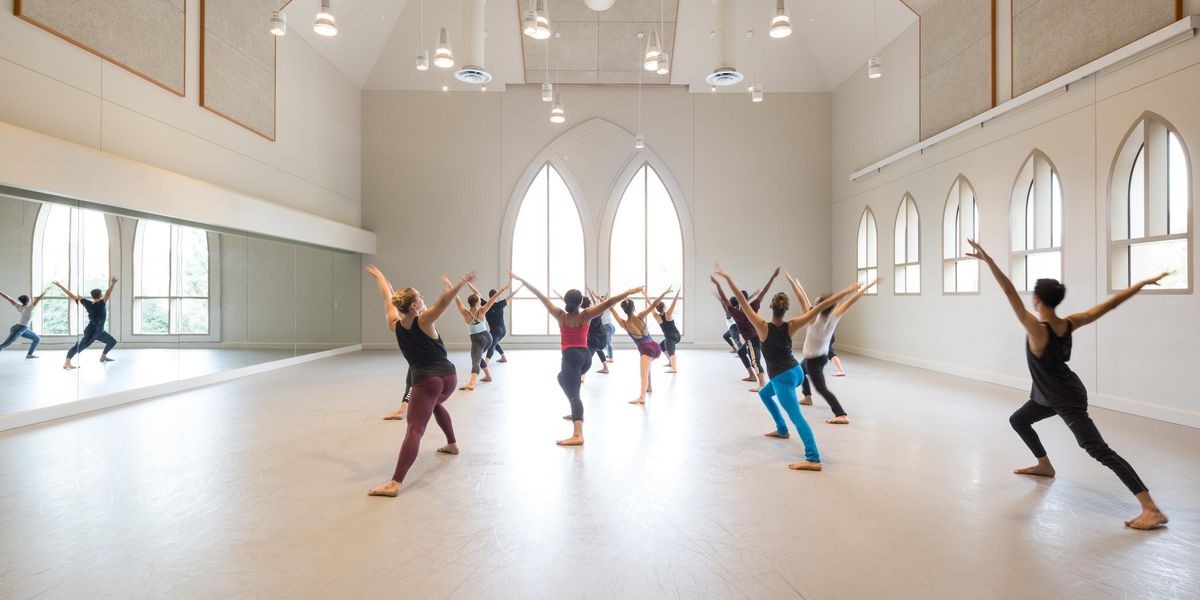At the Front of the Class
Teacher-training programs can benefit your career—now, and later.
After graduating from the School of American Ballet in 2012, Christina Ghiardi earned a spot in Boston Ballet II—as well as stints teaching for the school’s summer program and as a substitute teacher during the year. Flash-forward to today, and Ghiardi is a year-round, part-time faculty member of Boston Ballet School’s pre-professional division, a position that offers a steady income while she’s auditioning for a full-time company contract. “This teaching opportunity is perfect for me now,” she says. “I’m learning so much, and it’s something that I can always do.”
Right: Christina Ghiardi leading an advanced class at SAB. Photo by Erin Baiano, Courtesy SAB
.
In a challenging job market, dancers may need to call on special talents or interests—like teaching—to help carve out a sustainable career path for themselves. Yet Ghiardi didn’t simply grand-jeté her way to the front of the classroom. She got the training necessary for the job by taking advantage of a special program at SAB. Many schools nationwide offer their students the opportunity to start honing their teaching chops while still pre-professionals, giving them a head start on teaching as a second career.
“Developing an eye and a voice takes time and understanding,” says Michelle Martin, Ballet Austin’s associate artistic director, who oversees a pedagogy program at their academy. “You have to build up a capacity to stand in front of the room and express particular vocabulary that’s specific to the students’ level. It’s a disservice to the industry to teach without training.”
At Ballet Austin, second-year pre-professional trainees in the Butler Fellowship Program can opt to assist in low-level classes twice per week. (Ballet Austin II and first-company members often ask to take part in the training as well.) After observing the veteran teacher for a few weeks, trainees work up to giving students hands-on corrections and then leading part of the class. “As they move forward, they’ll plan and teach a class and get feedback from the teacher,” says Martin. “It allows them to be worked in slowly, eventually becoming a substitute teacher.”
SAB has a similar program. Advanced students in the top two levels can sign up to assist in the school’s preparatory and children’s divisions (for kids ages 6 to 9) once or twice per week. “One day I worked with Darci Kistler,” says Ghiardi. “I had Darci as a teacher for technique and partnering, and I learned so much by watching how she’d adapt to the younger students compared to our level.”
For students who demonstrate a knack for leadership, SAB chairman of faculty Peter Martins and co-chairman Kay Mazzo ask them to take part in an advanced teaching fellowship, established two years ago to build on the assistantship. From January to June, Ghiardi taught four advanced technique and pointe classes, with Martins and Mazzo dropping in to observe. “At the end of each class, I got feedback,” recalls Ghiardi. “One of the main points of critique was that the steps I was giving were too complex. The classroom isn’t a place to choreograph.” And, she says, working with an accompanist took some getting used to.
Both Mazzo and Michelle Martin note that teacher training isn’t the primary goal of their respective academies—but it’s an opportunity that students should take advantage of if presented. “Almost all of our students go on to dance,” says Mazzo. “But assisting other classes prepares them for their future after dancing, or even while they’re dancing.” Martin adds: “Students have to anticipate that they’ll be making a transition into teaching at some point in their lives. And in the way company contracts are offered today, many dancers have to make money while they’re looking for work, or even augment their paychecks when they do get a contract.”
Ghiardi suspects that she wouldn’t have even considered teaching this early in her career without the encouragement from Margaret Tracey at Boston Ballet School or Mazzo and Peter Martins at SAB. “But I’m so grateful that I have these experiences under my belt,” she says. “Teaching brings an even greater awareness to my own dancing and musicality. I think about all the corrections I gave students the night before in my own class the next day. What I say becomes more relevant.”
But what if your studio doesn’t have a formal program? “Watch your teacher,” says Mazzo. “Take notes. Look at other students and think about what corrections you might give them.” Ask if you can assist in low-level classes, or even teach a portion of the class—with her oversight. But most importantly, Mazzo says, speak up. “Let your teacher know you’re interested, and I’d hope she’d be more than happy to share her expertise. We need good teachers. And it’s a wonderful profession. Seeing my students grow up and become dancers themselves has been incredibly rewarding.”




